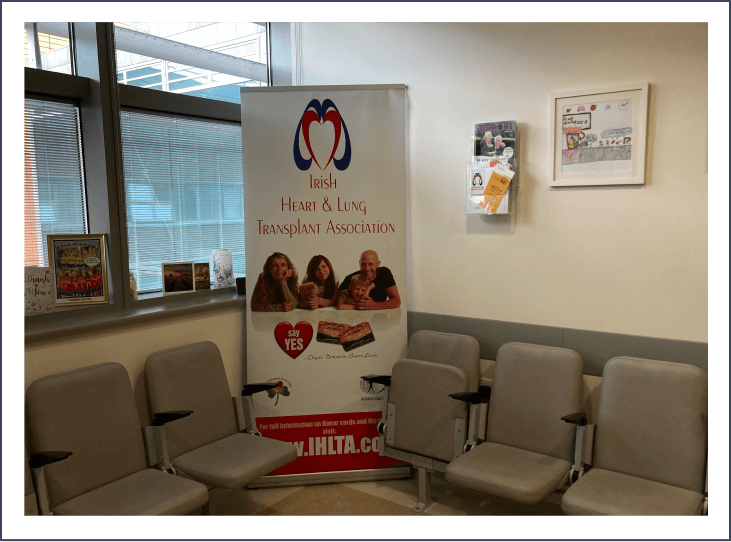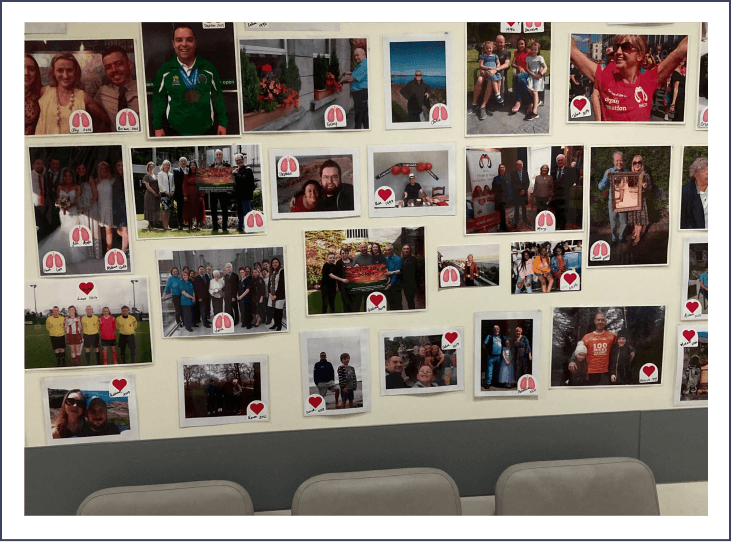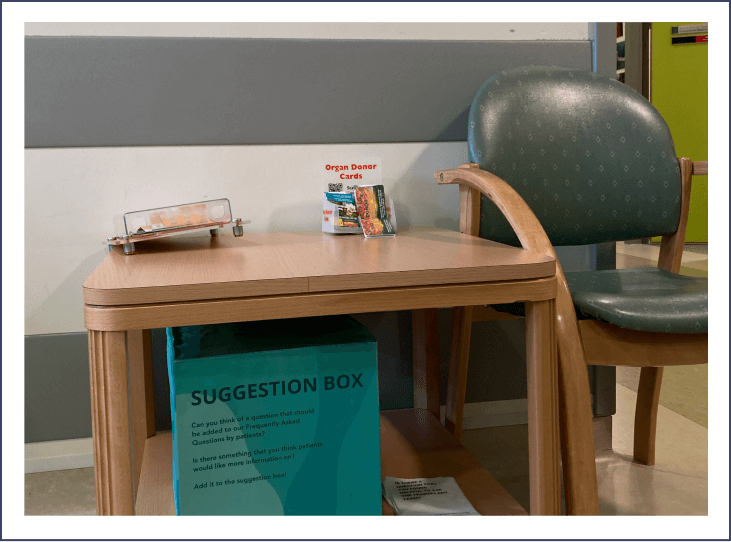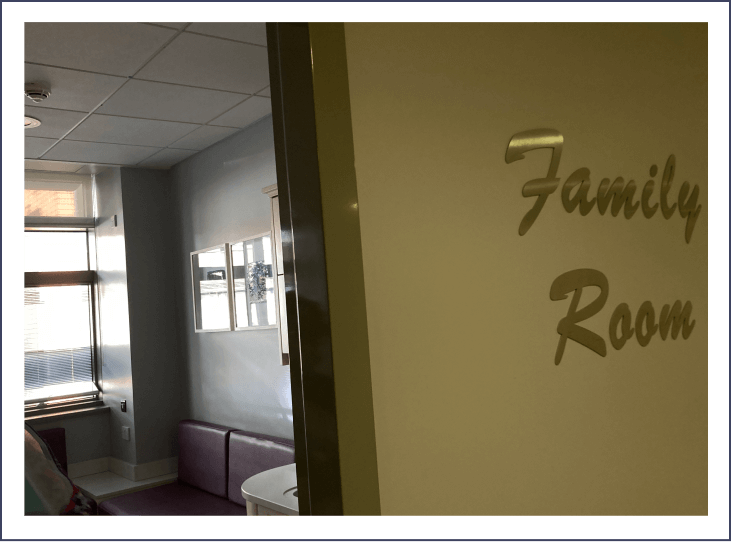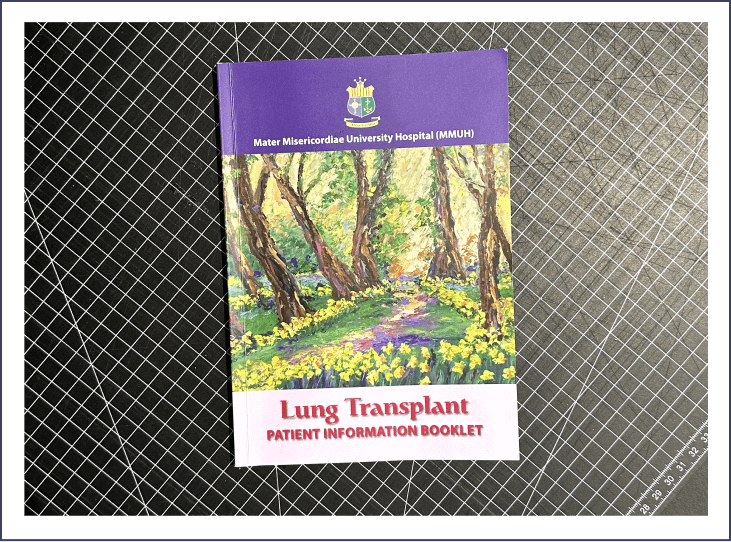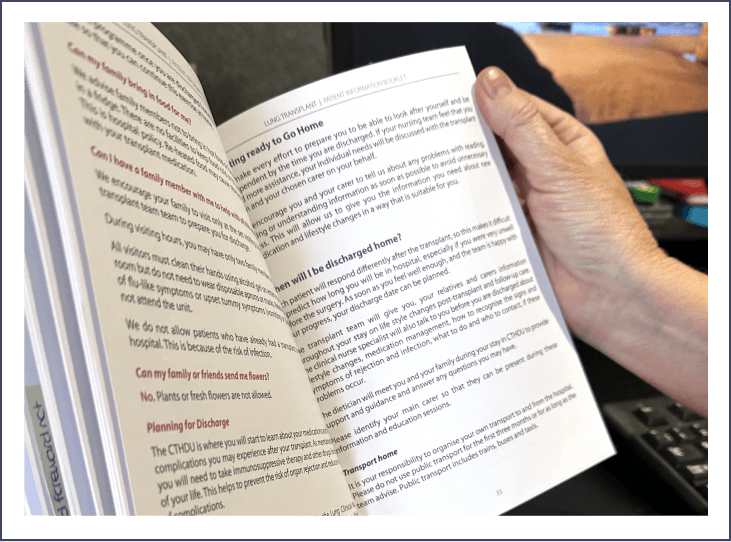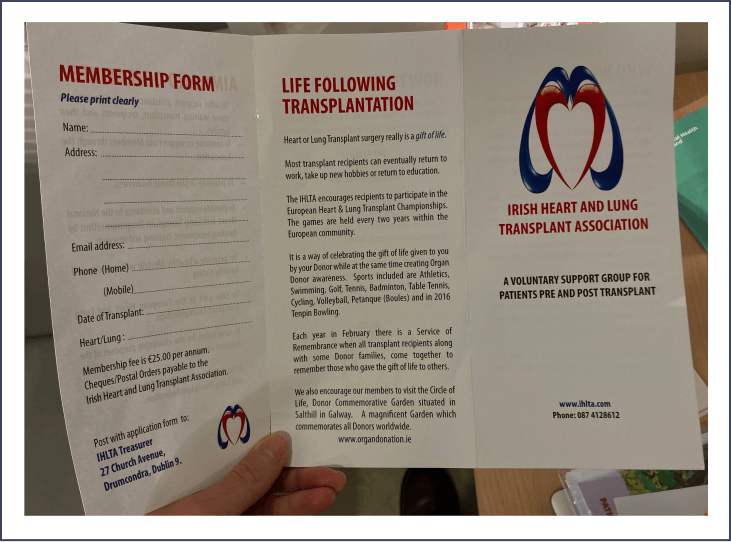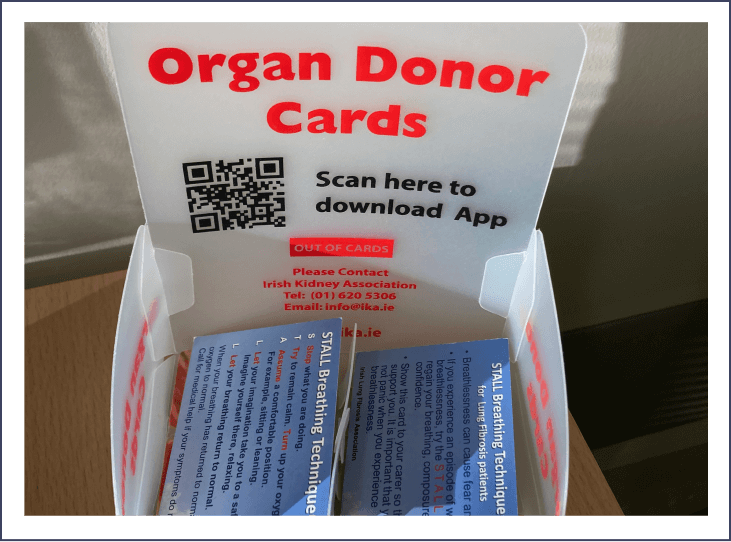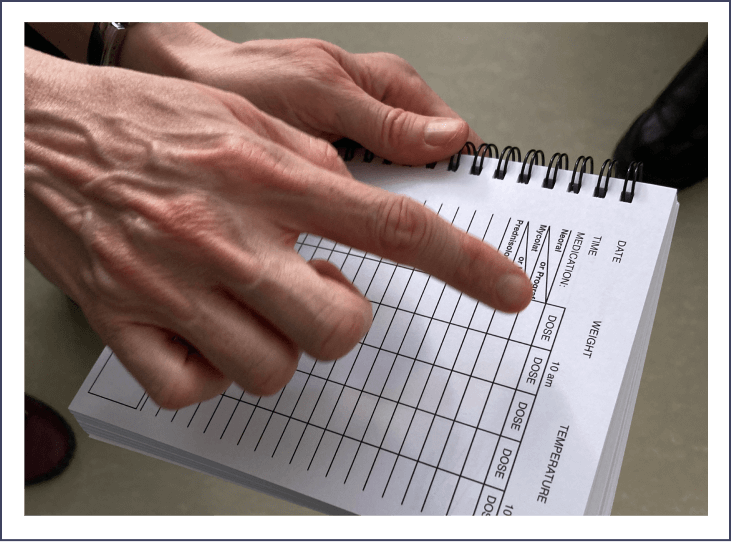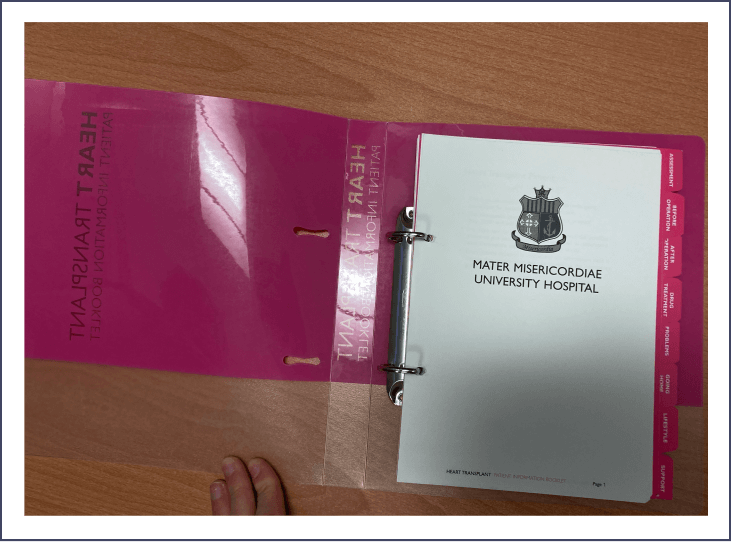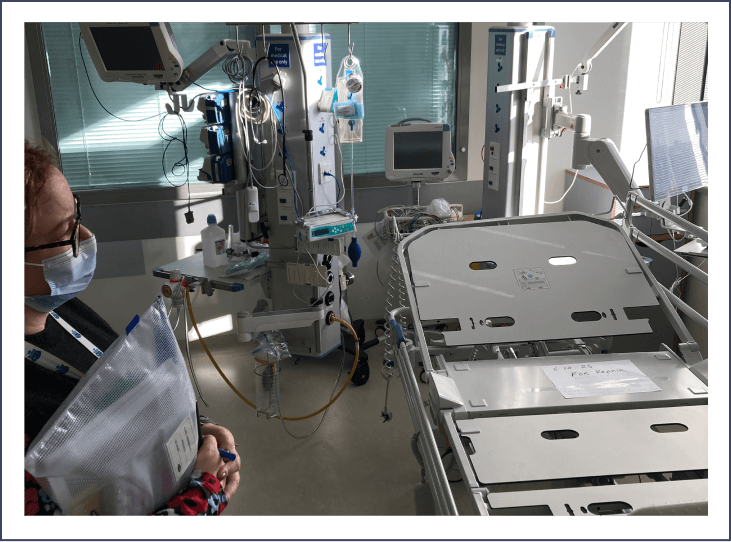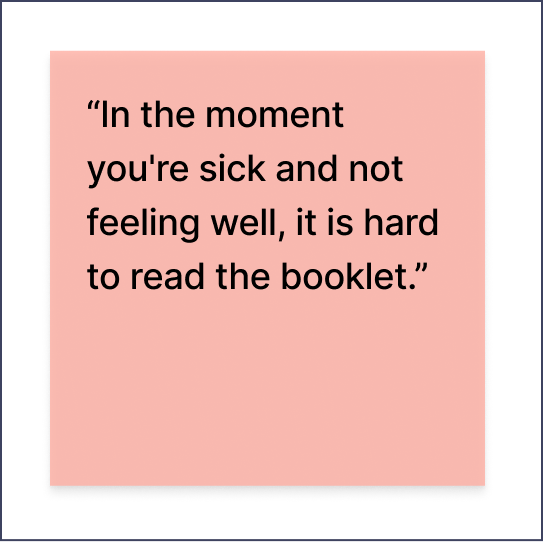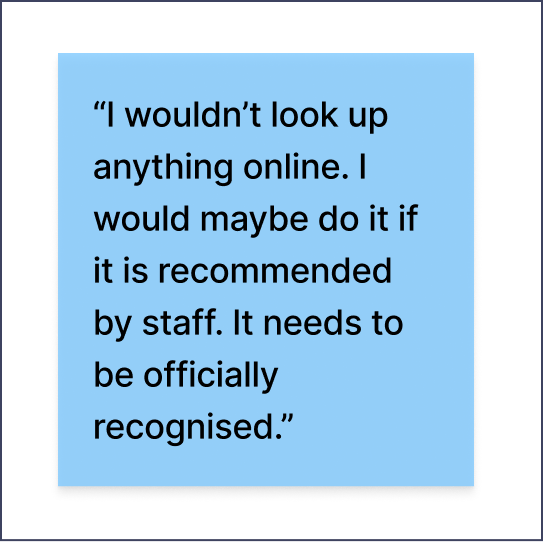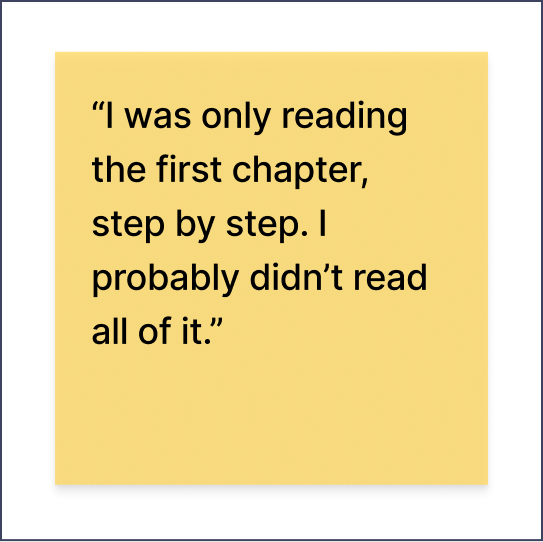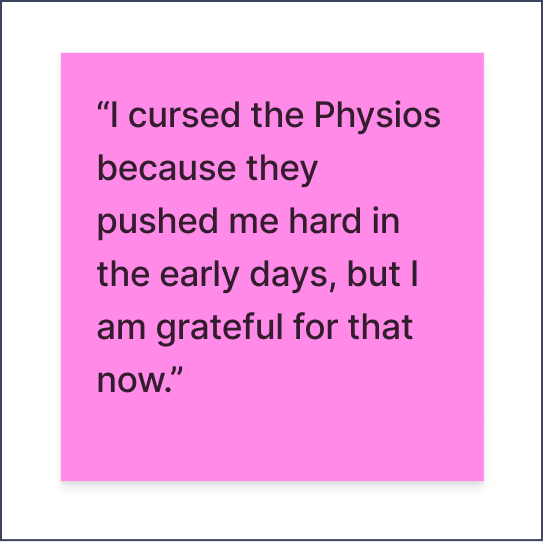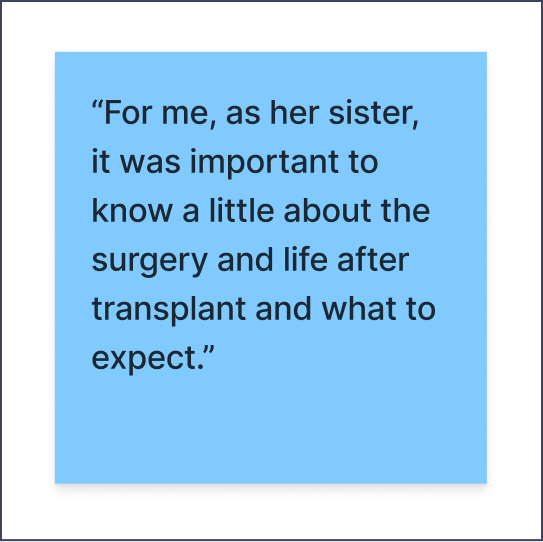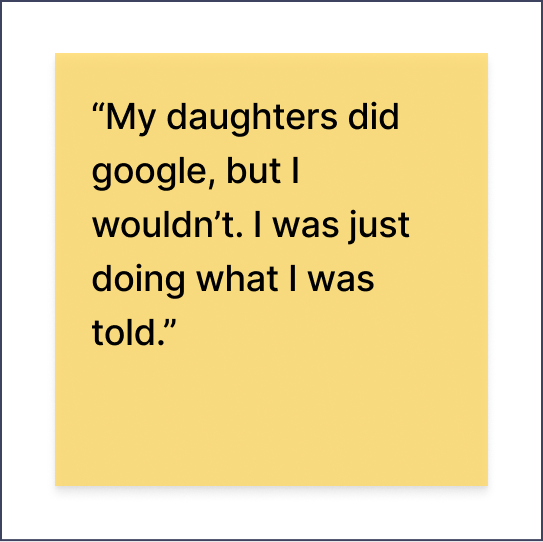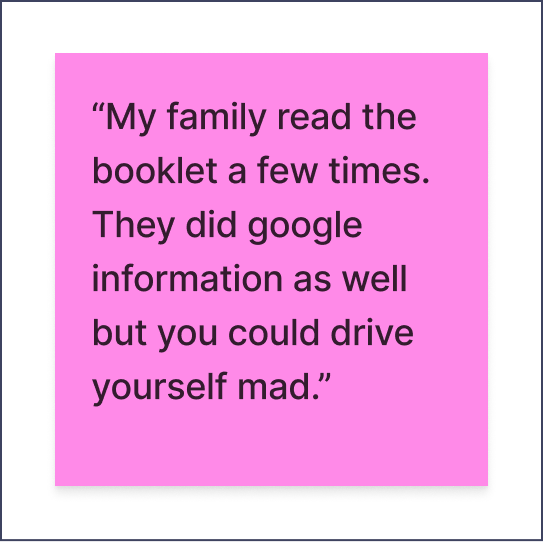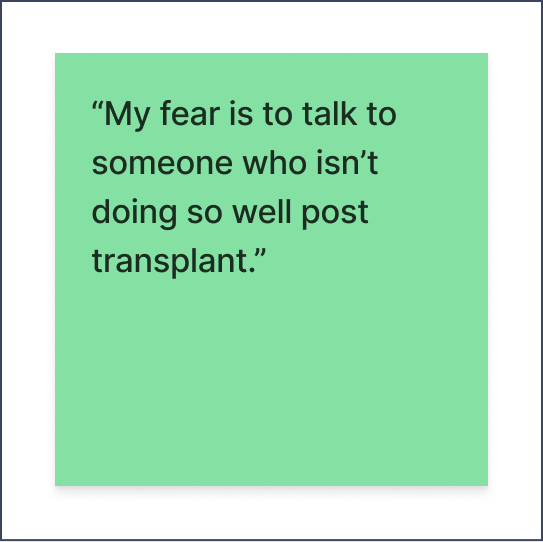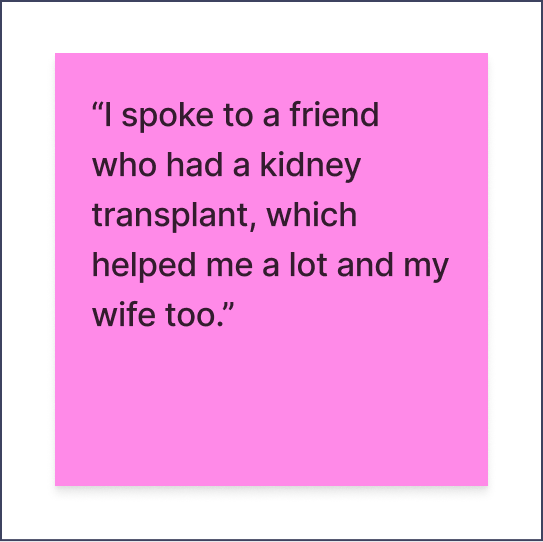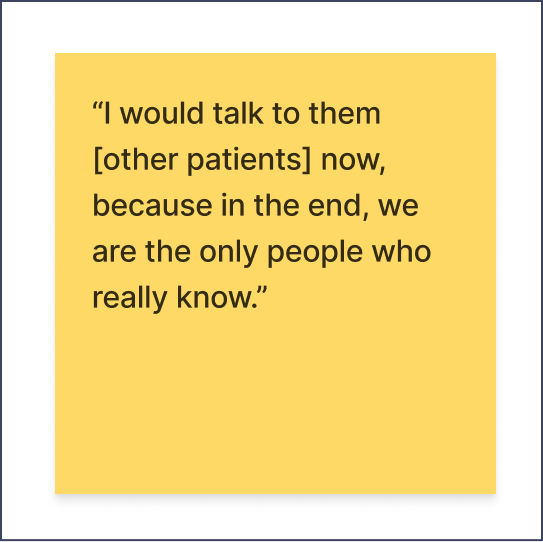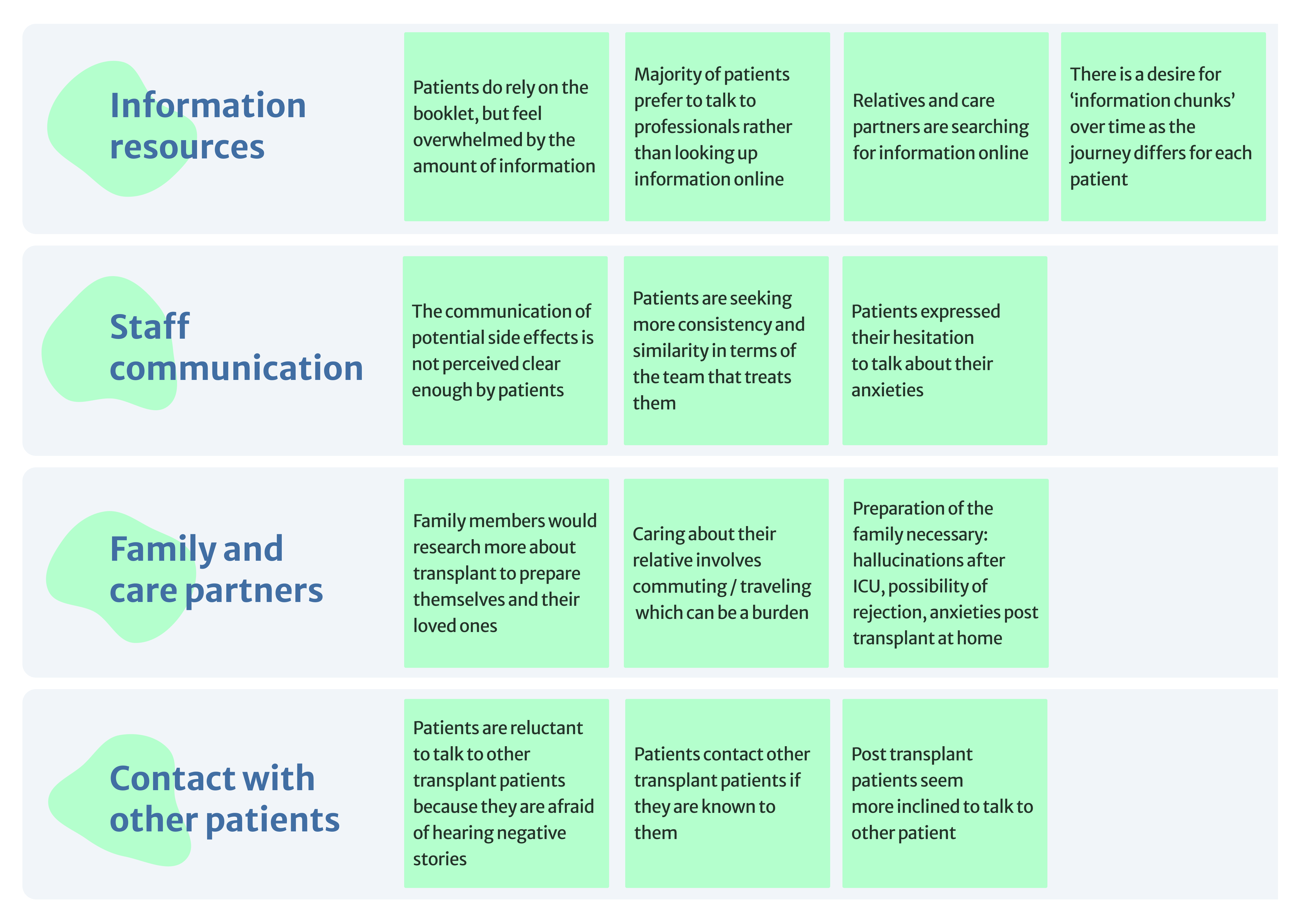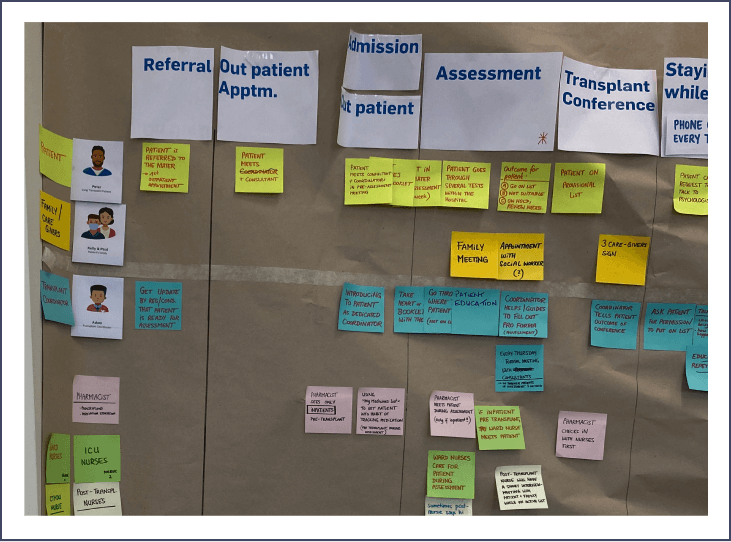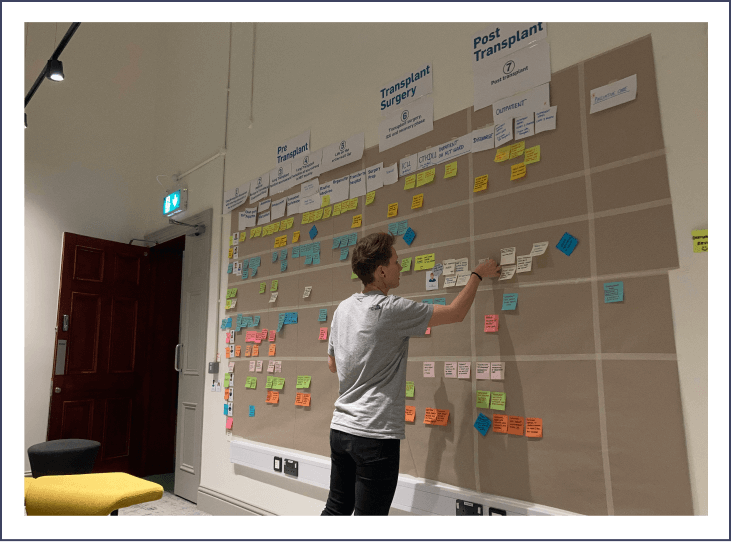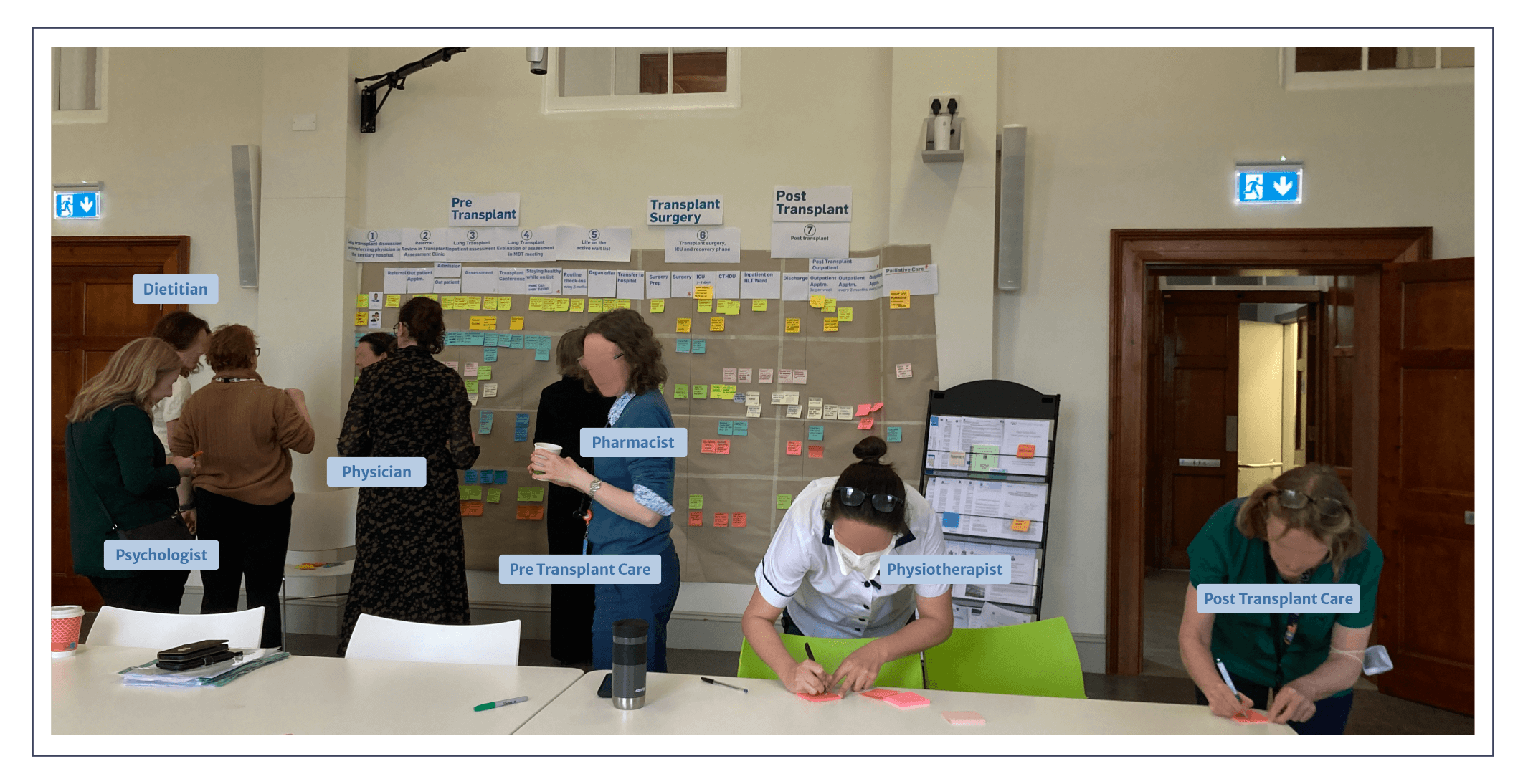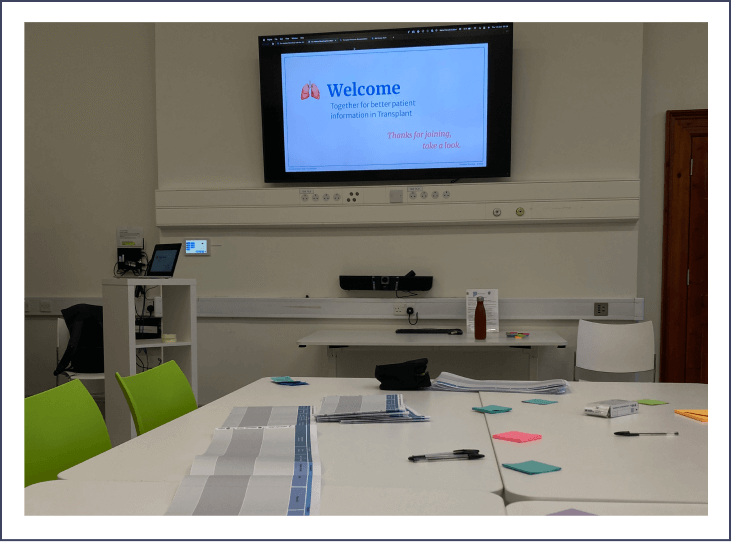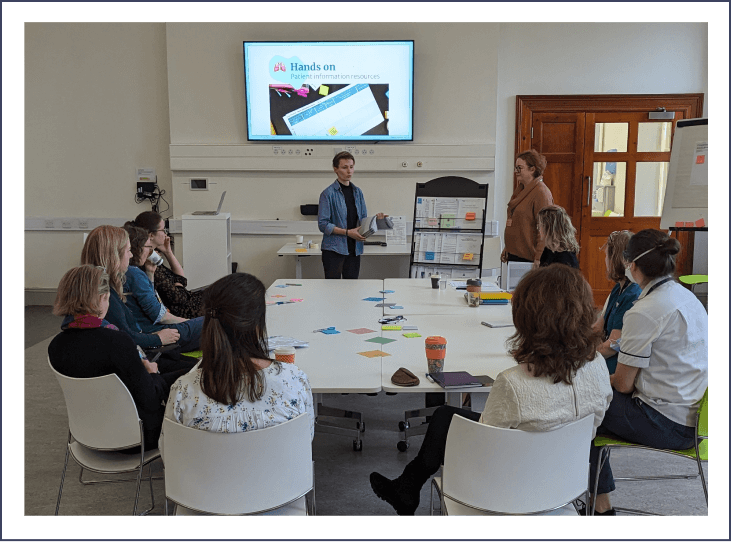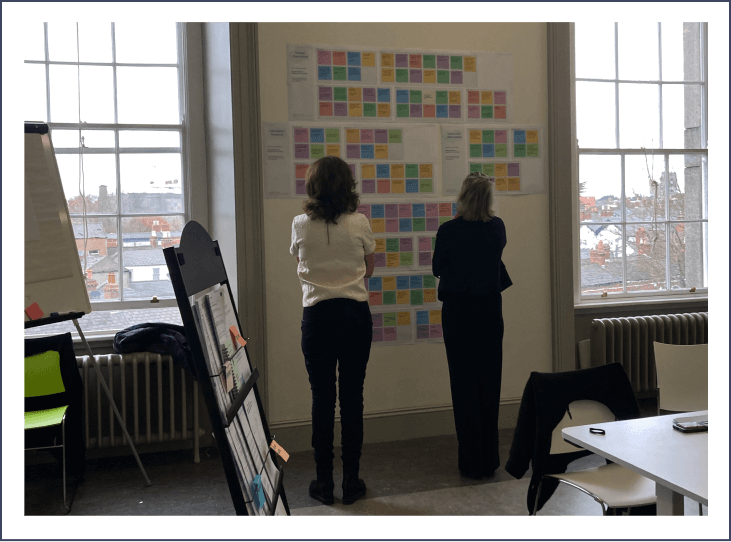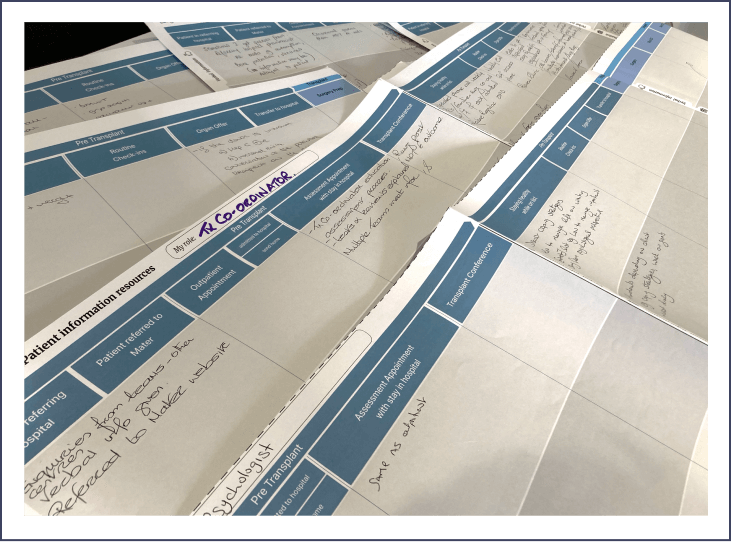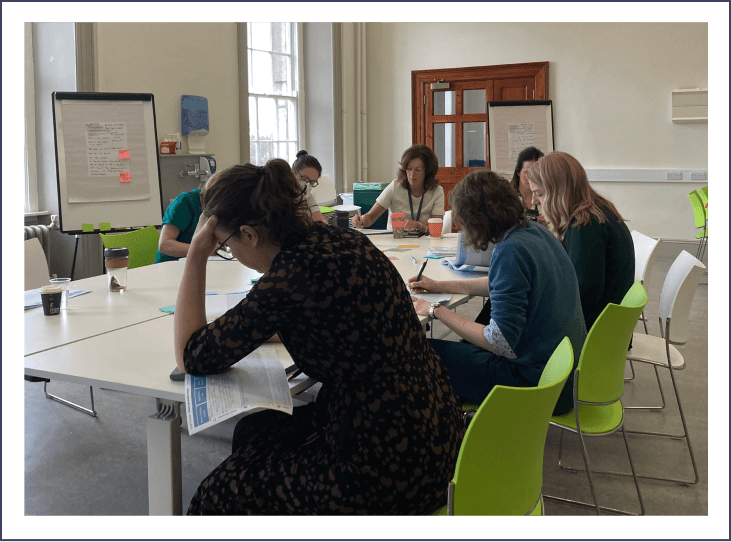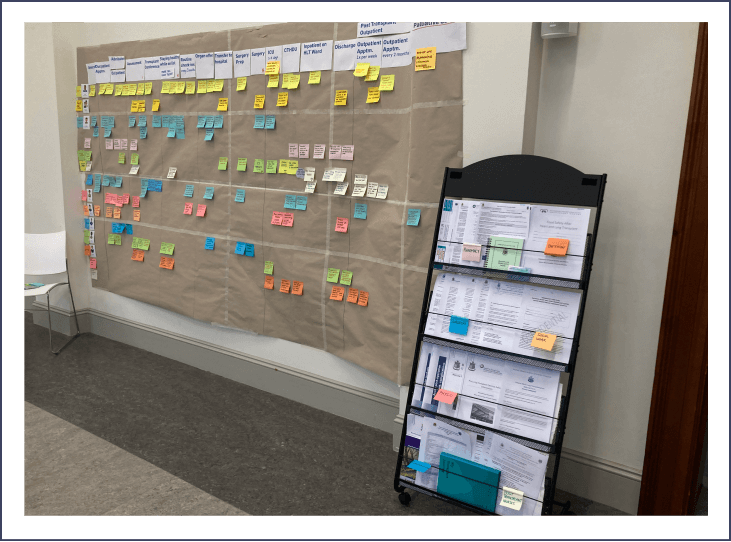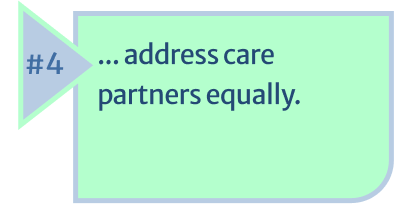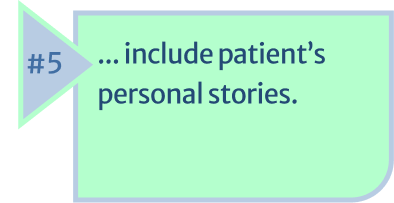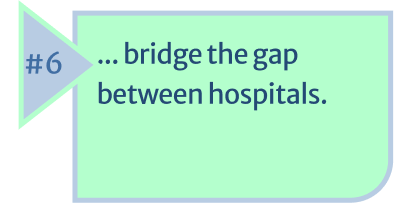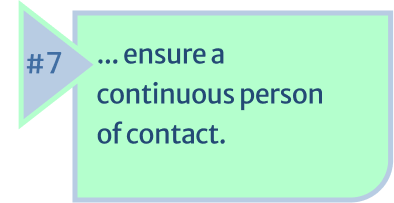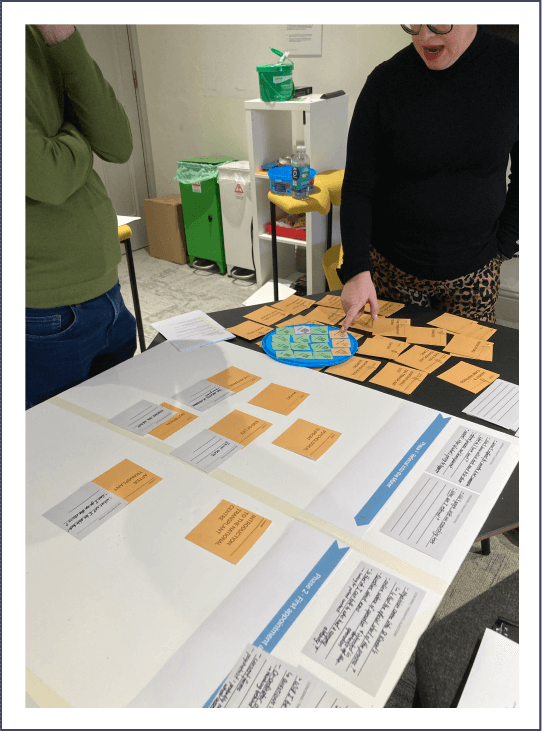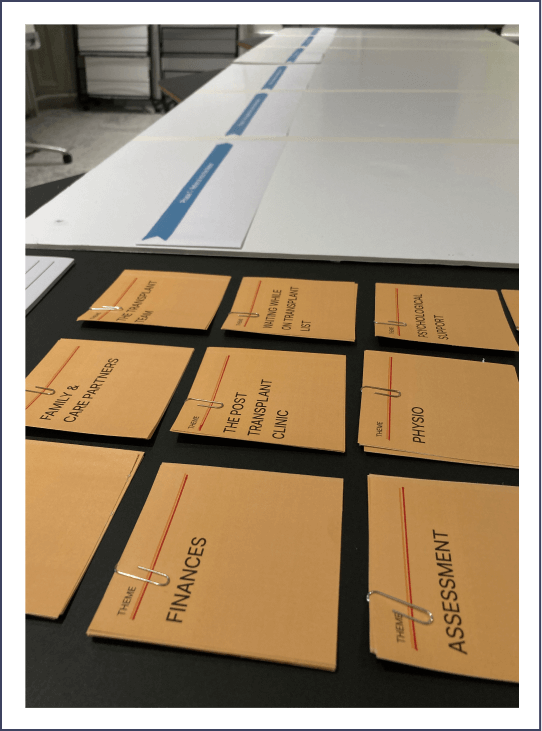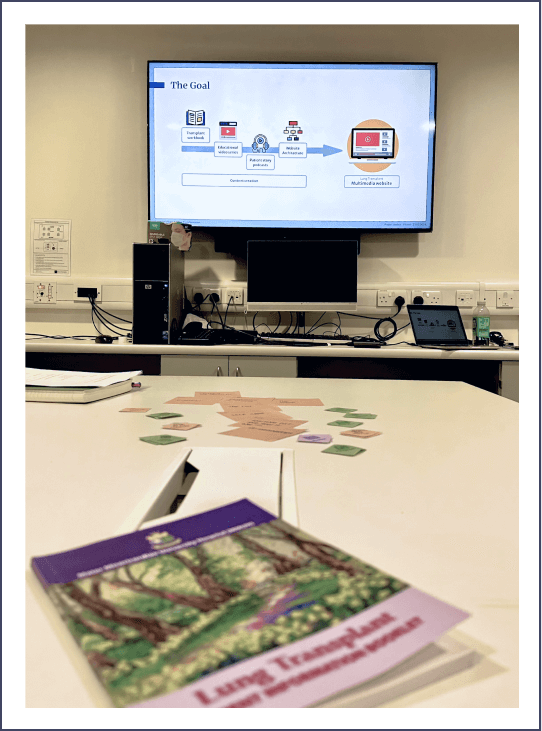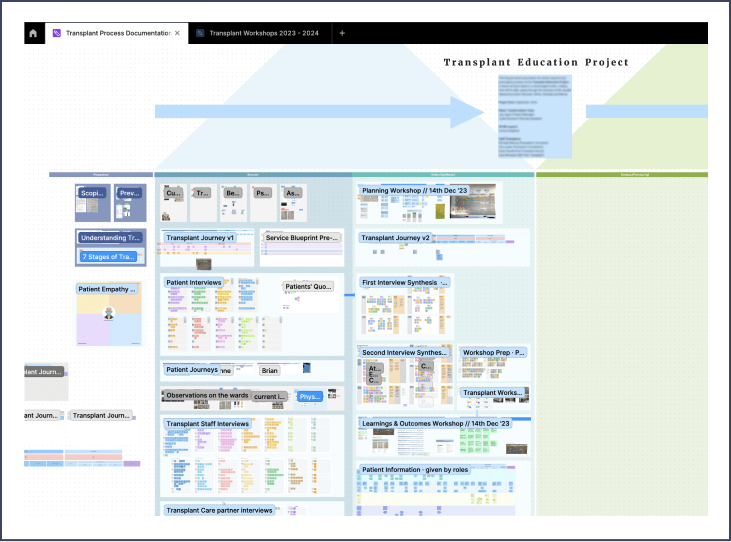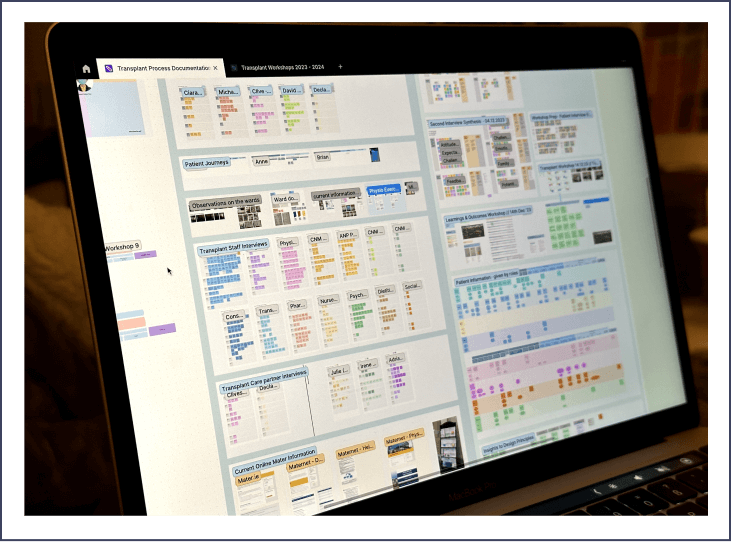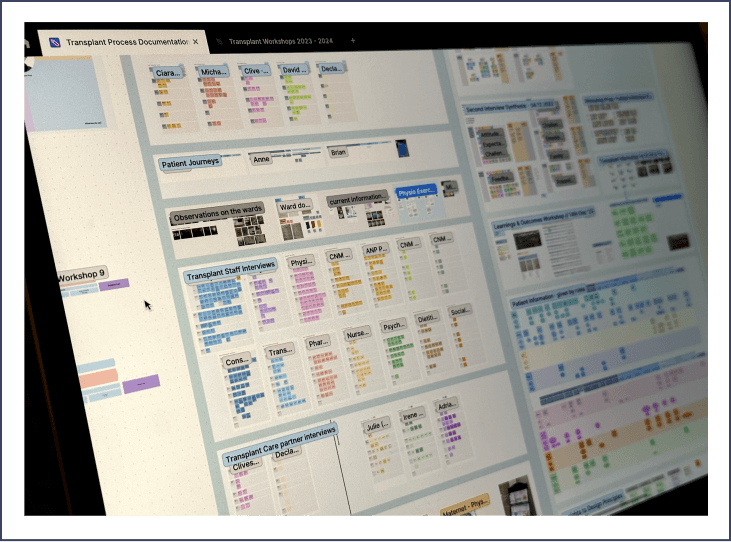TIME 2023/24, ongoing SKILL Service Design, Co-design
CLIENT National Heart & Lung Transplant Centre Dublin TEAM Mater Transformation
The Transplant Window
Receiving a new organ is not only a physical but also an emotional upheaval. To ease this challenging journey, it is vital to provide patients with thorough, easily digestible, and practicable information.
Receiving a new organ is not only a physical but also an emotional upheaval. To ease this challenging journey, it is vital to provide patients with thorough, easily digestible, and practicable information.
Challenge
- Streamlining complex information for patients and carers
- Incorporating needs of care partners and healthcare staff
Approach
- Continuous co-creation with healthcare staff, patients and care partners throughout
- Deep design research, journey mapping, in-depth interviews
Goal
- End-to-end patient education system
- Supporting lung transplant patients and their care partners equally
“The hope is to get those additional five years of life.”
— Patient (64), currently waiting for a single lung transplant
It takes a lot from patients and their loved ones to accept their deteriorating health and the need for a transplant.
The journey involves numerous tests and strict adherence to medical regimens to increase the chance for a transplant. Even if selected for transplantation, patients face major surgery and a lifetime of aftercare to prevent rejection and complications – a challenge for both body and mind.
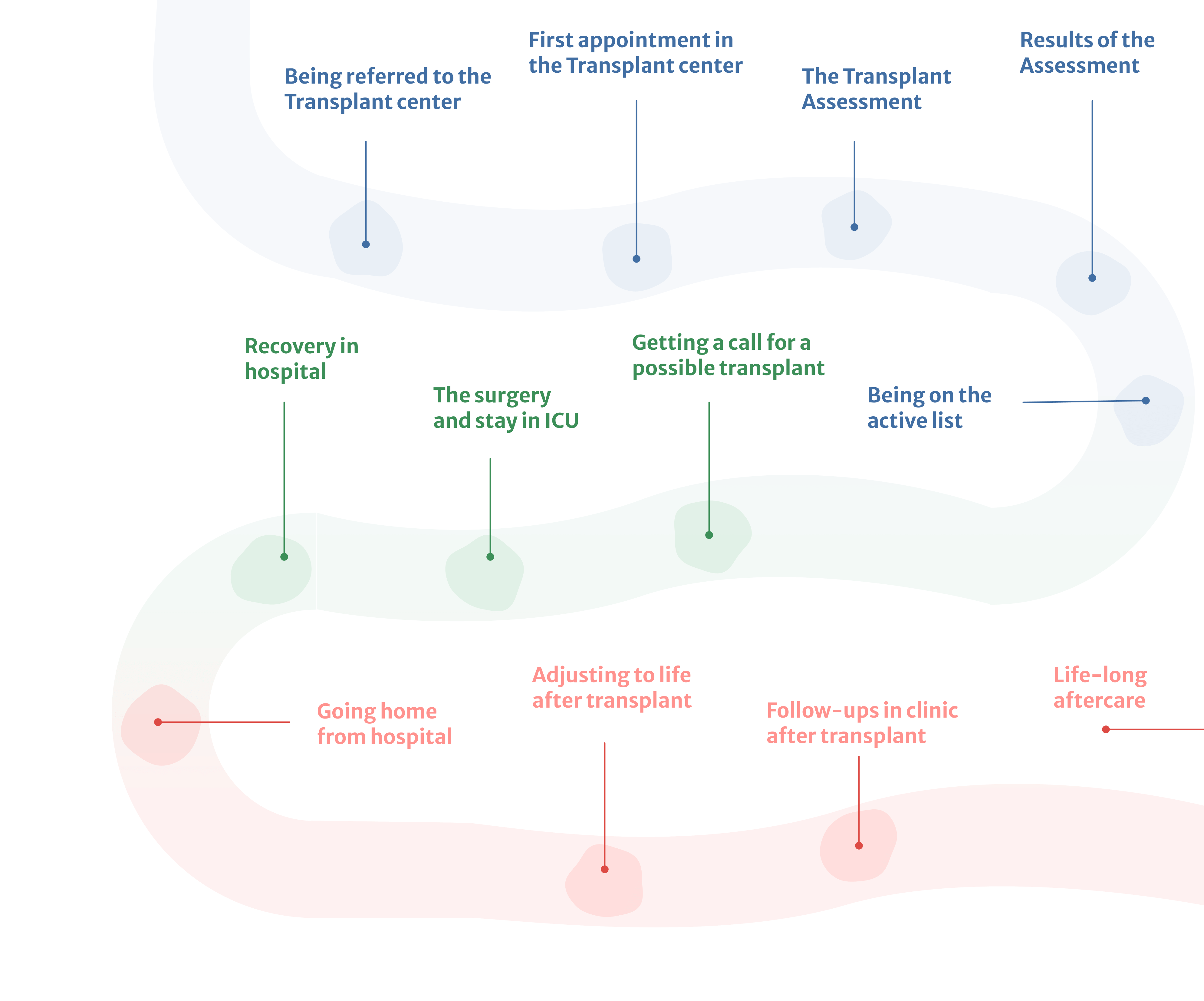
Identified stages of a lung transplant journey
through co-creation with staff and patients
“I don’t remember one single comprehensive item that talks me through what would happen.”
— Steve (41), double lung recipient
Based on this identified problem, the aim of the project is to provide patients and their carers with a complete information system for lung transplantation in Ireland that will accompany them on their life-changing journey from day one.
Audio excerpt of a patient interview, March 2024
Project phase 1

Ethnographic research
Visiting the outpatient clinic
Current information resources
Visiting the ward
In-depth interviews
In a first round of interviews, we were able to conduct conversations with 12 transplant patients, 5 care partners as well as 13 staff members of various roles.



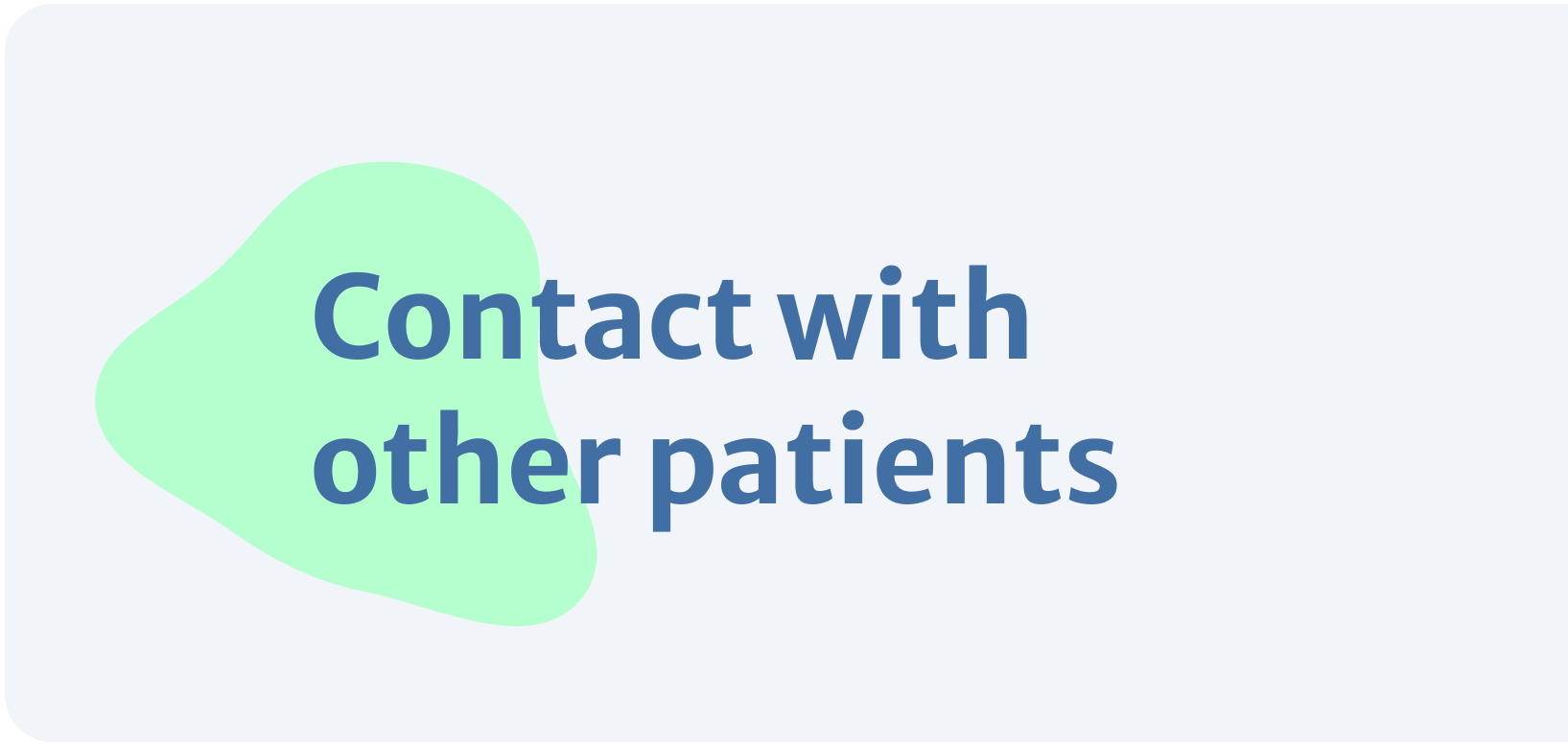
Project phase 2

Sensemaking
Developing the transplant journey
To better understand the entire transplant process, we focused on developing an analog journey map that shows all roles of staff, when they come into contact with patients, what information they pass on and when they leave the process.
This has proven to be a successful tool for engaging in discussions with staff members and visualising the parallel steps for them from an external perspective.
The current state of lung transplant information
To enhance our engagement with the healthcare team, we have been holding a workshop to validate our research through the perspectives of 8 different transplant roles:
- Physician
- Pre and post transplant nurses
- Surgeon
- Pharmacist
- Physiotherapist
- Dietitian
- Psychologist
The workshop provided a valuable chance to discuss the timing and format of current patient information, resulting in a visual documentation of those practices.
Measuring impact
Success metrics
For the evaluation of the impact of a future support toolkits, pre and post-intervention measures include:
- Patient experience surveys
- Analysis of self-care behaviours
(diet, exercise and medication compliance) - Preventable patient phone calls
and hospital re-admissions
Defining principles
How might we ...
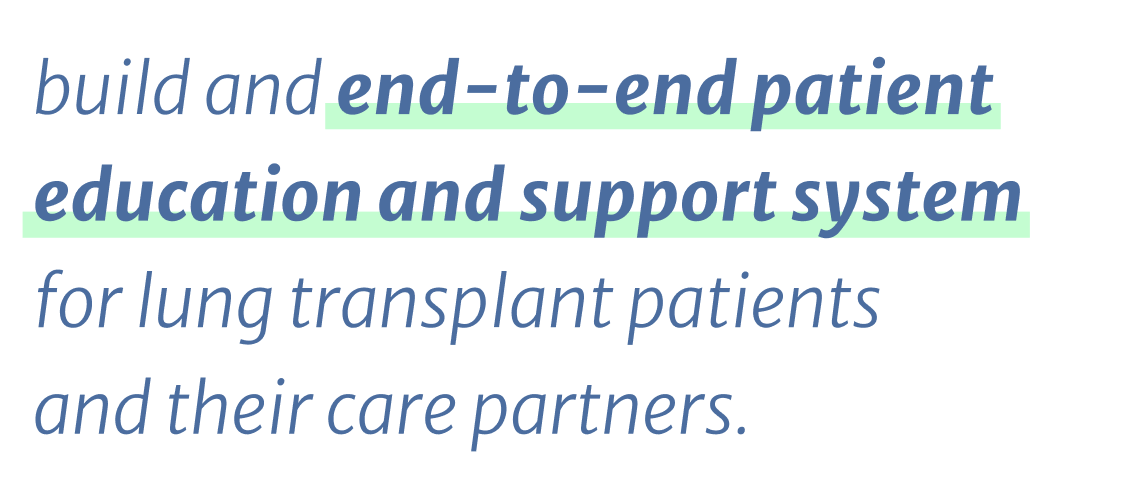
This future support system needs to ...
Project phase 3

Card sorting
The first step in the content gathering process is using the card sorting technique.
The card sorting helps us to collect the experiences of the patients and especially their care partners to find out at which point of the journey they would like to receive which information or address certain topics. Afterwards, we can simply compare the participants' results.
Staff engagement
We were able to establish a fix core team of 4 staff members who are willing to drive the project forward with us.
We hold regular monthly meetings to discuss progress and the next steps. We are currently also trying to involve a patient representative.
For the content creation process, the entire multi-disciplinary team will be on board to contribute information that patients need to receive.
Process documentation
The entire process is visually documented in FigJam, containing observation photos, affinity boards, interview notes, research synthesis.
In addition to FigJam, the tool ‘Notion’ is used to support meeting documentation and stakeholder management.
© Linda Klotzbach 2024
© Linda Klotzbach 2023
© Linda Klotzbach 2024
